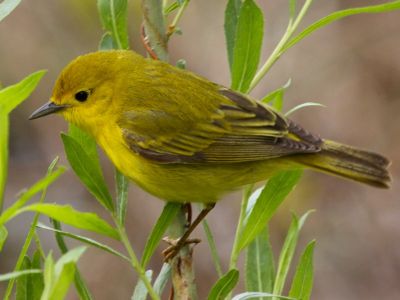 From the moment I became a birder there was a section of the field guide that gave me the shivers.
From the moment I became a birder there was a section of the field guide that gave me the shivers.
In my Peterson Field Guide to Birds there were four pages labeled Confusing Fall Warblers. I studied those pages many times but it was hopeless. The birds in the pictures were females or juveniles. Some had wing bars, some did not. Much as I tried I couldn’t identify those tiny, olive-green and yellow birds.
For many years I was cowed. Finally I bought a field guide that didn’t have those four pages and avoided the problem by ignoring it.
Years later I’m surprised to discover I can identify many fall warblers though I didn’t work at learning them. Instead I spent May after May looking at spring warblers. I got used to identifying the adults, noticing their body shapes, bill sizes and whether they had eye stripes, wings bars or beady eyes.
Eventually I realized that young warblers have the same traits. A long, thin-bodied warbler is still long and thin-bodied whether it’s young or old. An adult warbler who feeds by poking under bark will have babies who do the same. A warbler with a beady black eye, like this female yellow warbler, has a beady black eye at every age.
I’m still confused by many fall warblers – and a couple of spring ones too – but I enjoy them more since I gave up trying so hard.
(photo of a female yellow warbler by Chuck Tague)
I was so glad to read this. I struggle with warblers. It makes me feel challenged I am is so bad at it. I think enjoying them and not trying so hard is good advice.
I wrote this blog before I went birding today where I saw at least 3 confusing fall warblers at Flying Mountain. One was an American redstart. The rest were a challenge: a possible common yellowthroat, a possible female black-throated blue warbler and an impossible who-knows-what. I saw an osprey catching a fish – easy to identify and beautiful!